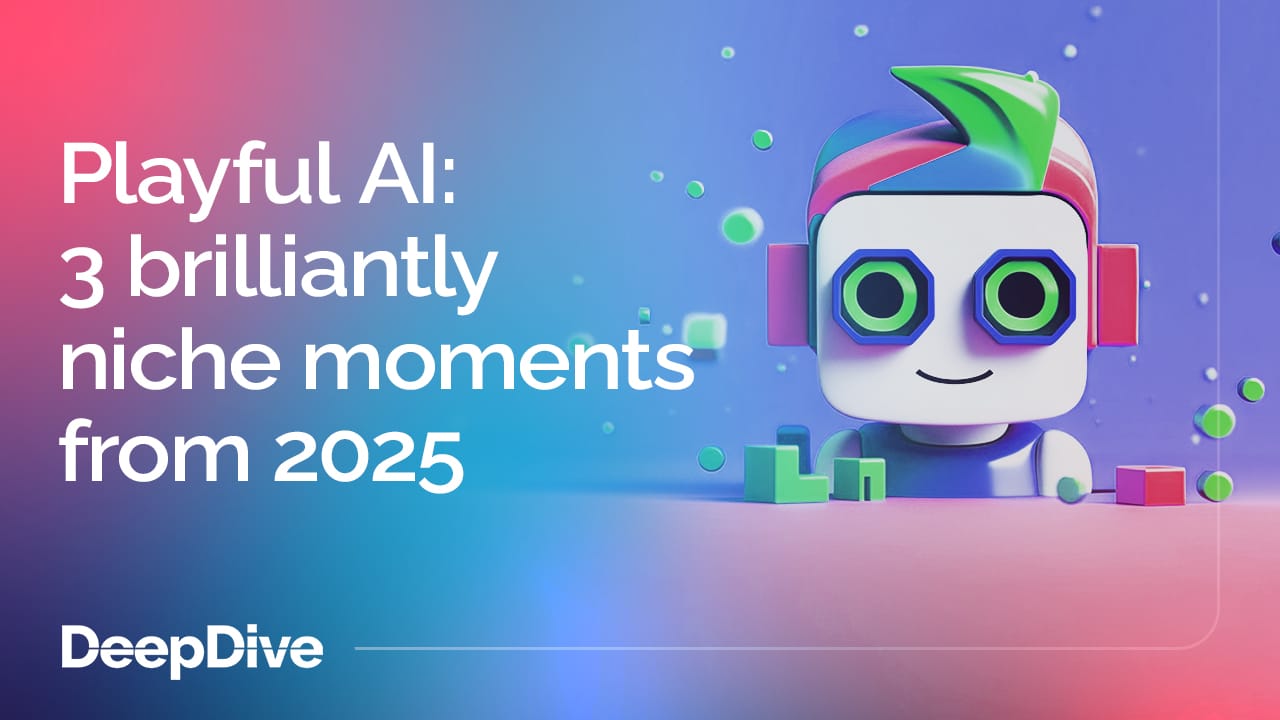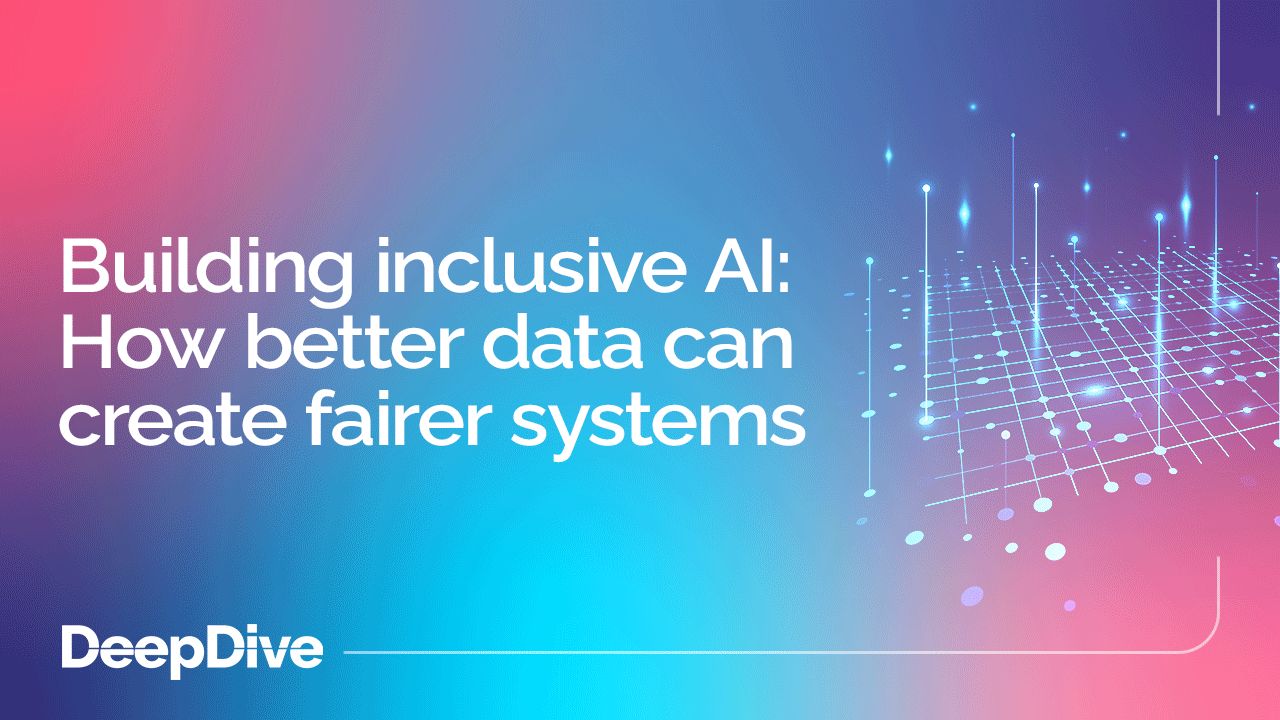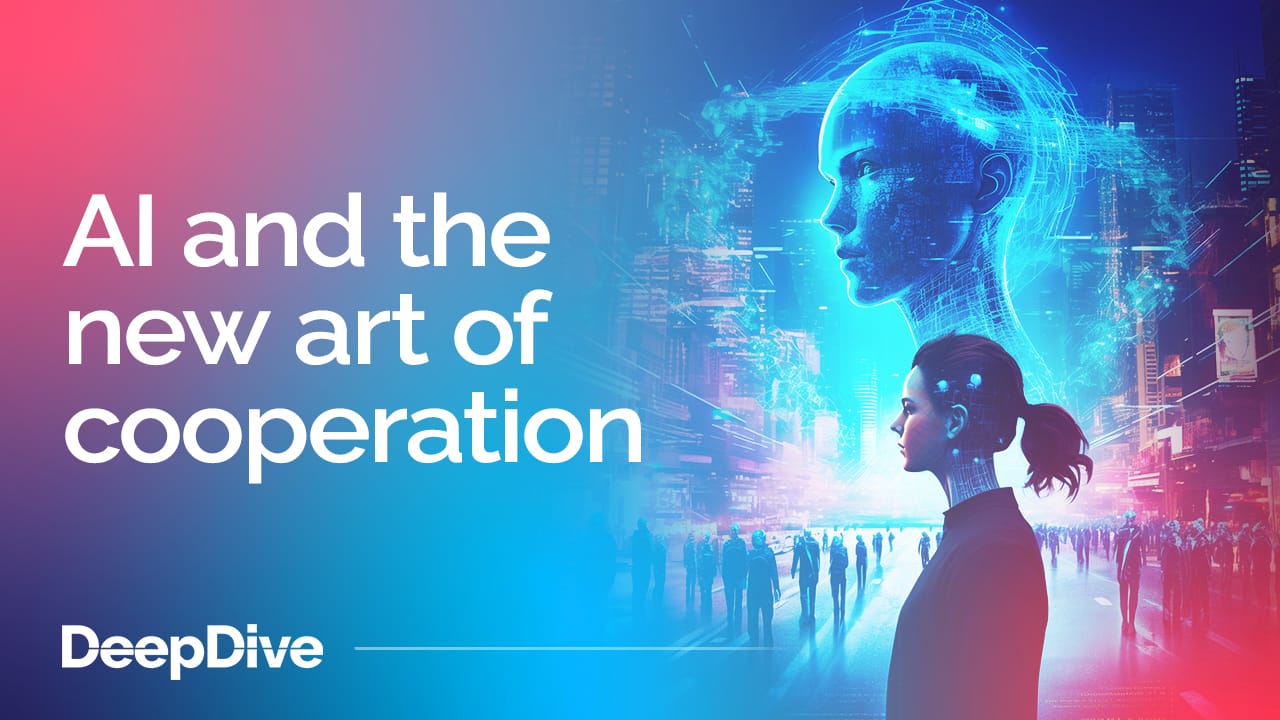

Building inclusive AI: How better data can create fairer systems

Welcome to the 6 new deep divers who joined us since last week.
If you haven’t already, subscribe and join our community in receiving weekly AI insights, updates and interviews with industry experts straight to your feed.
DeepDive
AI is becoming more deeply embedded in our lives every day. So we urgently need to make sure the systems we use work for everyone. To date, the reality is that existing AI tools don’t work for everyone; and we need international, cross-demographic collaboration to make sure that changes.
We’ve seen flawed facial recognition software that misidentifies people of colour, and speech recognition systems that struggle to understand neurodivergent speech patterns – to name just a couple of issues that have been uncovered. AI systems don’t just reflect the biases that already exist in society – they can grow those biases and increase their negative impact.
So how do we fix it?
Yonah Welker (Explorer, Public Evaluator, Board Member - European Commission Projects) explores the intersection of AI, policy, and accessibility in his work. And when we spoke to him, he made it clear that if we want to make AI better, we have to start by making data better.
Incredible things require quality data
“AI can do incredible things,” Welker said, “but only if we feed it the right data.”
If we look specifically at accessibility, for example, AI has the potential to transform assistive technologies and make life better for millions of people with disabilities:
“AI algorithms can be used to augment smart wheelchairs, walking sticks, geolocation and city tools, bionic and rehabilitation technologies, adding adaptiveness and personalisation.”
For people with hearing and visual impairments, AI-enhanced computer vision could turn sign language into text content, or turn pictures into sounds. And for those who are neurodivergent or have cognitive conditions, AI can offer support in an increasingly wide range of ways; including emotion recognition, articulation tracking, and communication aids.
But there’s no one-size-fits-all solution to accessibility
Sounds great in theory; but providing this kind of support isn’t simple. Because no two people share the exact same accessibility needs.
“Despite the significant possibilities of AI, every disability is unique,” Welker added, “and may pose challenges for algorithms associated with proper recognition, analysis, predictions and outcomes.”
That uniqueness is often what stumps the systems. Algorithms rely on patterns – and if your body, voice, or behaviour doesn’t match the data the AI was trained on, the system fails. This might cause frustration, but it could also cause dangerous consequences: a voice command ignored by a car, for example; or a warning unrecognised by a visually impaired user; could have serious impacts.
We need to identify the root causes of AI mistakes
We asked Welker why AI systems come up with incorrect outcomes, and he said it can be due to:
- Lack of access to the data of the target population
- Distortions in existing statistics and data sets
- Lack of explainability
- Models that are not properly aligned with objectives
Importantly, these problems don’t always (or even often) originate from bad intentions. Developers simply don’t have access to high quality data that reflects a wide range of human experience. This was highlighted in a 2023 report from UNESCO which found that over 60% of AI systems lack meaningful datasets on disability and inclusion.
The availability of good, relevant, accurate data converges with other limitations affecting AI systems – like, as Welker noted, “constraints of technology or a system’s design, social effects; organisational, institutional and policy limitations.”
Better data leads to better outcomes
Here are five key ways we can improve AI data to support more inclusive outcomes:
- Involve the communities AI is meant to serve
Inclusive data starts with inclusive design. That means involving people from underrepresented communities – particularly disabled, neurodivergent, and marginalised individuals – in the entire AI development lifecycle.
The Alan Turing Institute recommends a ‘co-design’ approach, where affected communities are part of defining not only what the AI should do, but how its data is gathered and tested. - Expand datasets to reflect real-world diversity
This may sound obvious, but it’s often overlooked: datasets need to include the full range of human voices, bodies, behaviours and experiences. That includes people with different speech patterns, body types, mobility aids, and communication styles.
“A person may lack particular limbs, or have unique body shape, posture, and movement pattern, making it difficult for algorithms to recognise,” said Welker. And these experiences must be part of the dataset from the start – not added in as an afterthought. - Audit and challenge algorithmic assumptions
Many AI failures come not just from missing data, but from flawed assumptions about how people behave or communicate. That’s why Welker stressed the need for oversight:
“In order to achieve the state where algorithms serve humanity, we should embrace it as a complex, cross-sector objective; avoid silos; ensure representation and oversight of involved stakeholders.”
Transparent audits and third-party evaluations should be built into the lifecycle of AI systems, not tacked on after deployment. - Push for policy that supports inclusion
Welker highlighted the importance of strong policy frameworks that don’t just regulate AI, but also govern the platforms and ecosystems AI operates in:
“It’s also important to see distortions behind the algorithms and algorithmic policies – that’s why our recent suggestions were addressed not only to the AI Act, but the ‘platforms’ acts – such as Digital Services and Market Acts, cross-sector cooperation.”
This broader perspective is crucial. Inclusion isn’t just about getting the tech right – it’s about aligning institutions, markets, and society toward fairness. - Make AI explainable – and challenge the black box
One of the biggest roadblocks to inclusive AI is the lack of transparency. When AI makes a decision, it often can’t tell you why. That’s a huge problem for accountability, especially when the stakes are high.
In a 2024 white paper, the European Disability Forum called for “mandatory explainability standards” in all AI used for public services, such as health, policing and education. These changes are essential for building trust and ensuring systems treat everyone fairly.
It’s about direction as much as data
Fixing the data is just one part of the solution. As Welker made clear, inclusive AI is a cross-sector challenge – and we’ll only meet it by working across disciplines, across communities, and without silos.
“To serve humanity, we need to ensure fairness, transparency and accountability for data, algorithms, systems and assessment.”
It’s a big task. But with a focus on data quality, and with the right voices in the room, we can build AI systems that truly work for everyone.
Share your perspective
What’s the biggest obstacle standing in the way of inclusive AI right now? We want to know what you think.





